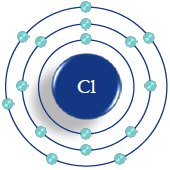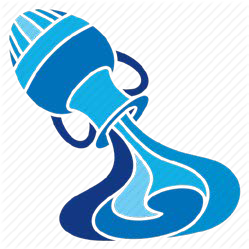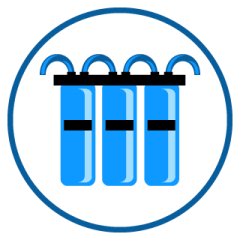What if you don't like the taste of chlorine in your water?
Why does the water taste of chlorine?
 The chlorine odor of tap water is a result of the chlorine “residual” which is a low level of chlorine maintained in the water as it flows throughout the distribution system (from the treatment plant to your home). A residual level of chlorine is necessary to protect the consumer (you) from harmful microorganisms like bacteria, viruses and parasites.
The chlorine odor of tap water is a result of the chlorine “residual” which is a low level of chlorine maintained in the water as it flows throughout the distribution system (from the treatment plant to your home). A residual level of chlorine is necessary to protect the consumer (you) from harmful microorganisms like bacteria, viruses and parasites.
- The EPA requires water treatment facilities to maintain chlorine levels no greater than 4 milligrams per liter (mg/l).
- These levels do not pose a risk to human health and are safe for consumption.
- Most people can sense (through taste or smell) a chlorine residual at 1 mg/l.
The intensity of the chlorine taste and smell typically depends on the distance the public water source is from your household (i.e., the closer your house is to the water treatment plant, the stronger the chlorine taste).
What can you do?
If you do not like the taste of chlorine in your water, the good thing is that you can do something about it! Several solutions are listed below:

Letting Water Stand
Fill a clean pitcher with water and set it aside for several hours. You can place the pitcher of water in the refrigerator until needed while the chlorine in the water evaporates.

Boiling Water
A faster way to remove the taste of chlorine from your water is to boil the water for about 15-20 minutes then store in a clean container in the refrigerator.

Installing a Water Filter
Filters are an effective way to remove chlorine from tap water. These devices can be attached to a jug, faucet or installed under-the-sink. Other filters can be permanently fixed, meaning your entire household water system is filtered.
What type of filter should you look for?
- Granular activated carbon filters (GAC) will remove chlorine taste and odor problems from your water.
 Reverse osmosis (RO) filters are more complicated than GAC filters and will remove more contaminants. Note: The initial instillation and overall maintenance cost is more with RO filters than GAC filters.
Reverse osmosis (RO) filters are more complicated than GAC filters and will remove more contaminants. Note: The initial instillation and overall maintenance cost is more with RO filters than GAC filters.- Look for the NSF/ANSI (National Sanitation Foundation) approval label on filters before purchasing.
What if taste issues persist?
In these instances, contact your local public water system utility for additional recommendations. If your home is served by a community water system, request a copy of the annual Consumer Confidence Report (CCR) which summarizes the quality of water that is delivered. Also, consider having your water tested to see if other contaminants are the cause. Certified laboratories will provide sampling instructions and containers. To find out more about certified labs within your area, visit the Drinking Water Program's pages for Certified Water Chemistry Labs and Certified Water Microbiology Labs.
If you can still taste chlorine...
If you have used the tips stated on this page and you can still taste chlorine in your tap water (even in hot drinks like tea)
- there may be other contaminants affecting your drinking water, or
- the issue might be related to certain plumbing materials used in your household.
Contact Us
If you have additional questions or concerns, contact the Drinking Water Program.

 Indicates an external site.
Indicates an external site.